Our recommendations are made independently. We may receive commissions from purchases made via our links.
How Shouldit Test Faucet-Mount Water Filters v1.1
Shouldit’s team has reviewed some of the best faucet-mount water filters on the market. Here’s the full testing procedure that we used!
Water filtration equipment has become essential for many households. Surveys have also revealed that as many as 77% of Americans now filter their water at home. Given multiple high-profile cases of water contamination across the country, it's easy to understand why people are shifting towards a DIY approach to water filtering.
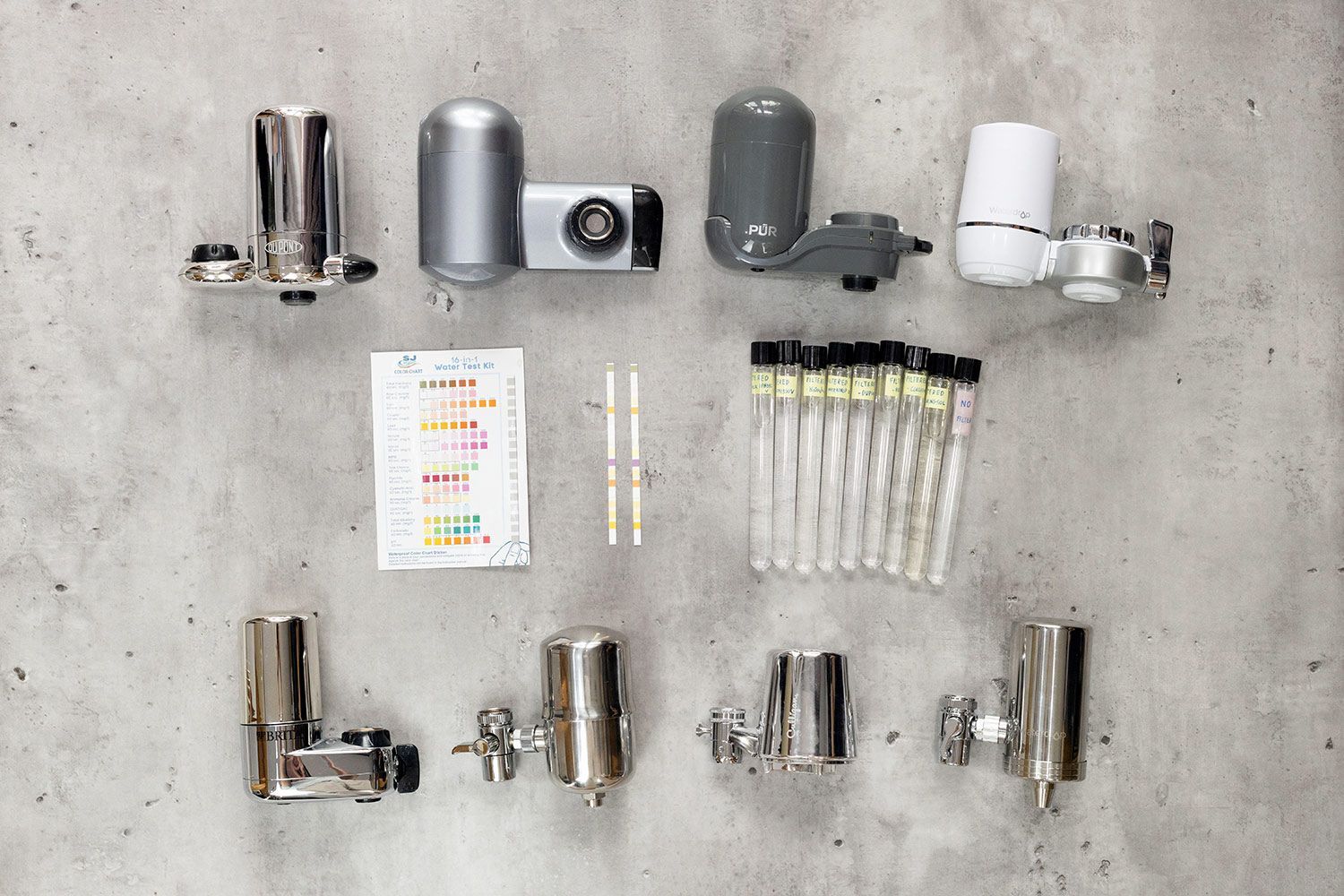
One of the cheapest yet most efficient kinds of water filtering equipment that you can use is faucet-mount water filters. They attach directly to your faucet and provide your home with clean, potable water on demand.
To help you buy the best faucet water filter possible and show you how the testing process is done for each review article on our website, you'll find the full testing procedure for faucet-mount water filters in this Shouldit's feature!
Testing Methodology
To ensure consistency and reliability in our testing, we perform the same testing procedure across all faucet-mount water filters. This will ensure that our test data are comparable across the board.
Additionally, the testing methodology will be subjected to changes in the future. It can be changed for any reason, from our team finding new ways to test the product better, or there are changes in the market that require us to revamp our testing procedure.
In any case, if there are any changes — no matter how small — we’ll update our pages and inform you accordingly.
Overall Rating
The overall rating of a faucet-mount water filter is calculated by aggregating the scores of three major tests: Performance, Design, and Ease of Use. Each test has a different weighting in the calculus, depending on how important it is to the user.
Here’s the breakdown.
- Performance (50%)
- Design (20%)
- Ease of Use (30%)
Performance
In the performance test, we put the faucet-mount water filter through its paces on our testing rig. The filtered water is collected in a cup, then it’s tested using specialized testing kits.
Since this section showcases how well the filter actually performs, it is the most important test in our methodology. It’s also the reason why the performance test takes up 50% of the overall rating.
Currently, the performance test is separated into four smaller tests:
- Lead Test (45%)
- Chlorine test (35%)
- Flow rate test (20%)
Lead Test (45%)
The Premise
Lead in water is the number one concern among Americans when it comes to water quality. There are still millions of water service lines made from lead around the country, which can lead to lead poisoning over the long term.
But while even simple faucet-mount filters can effectively remove lead from water, this contaminant is impossible to detect by taste or smell, unlike chlorine. Only specialized testing can verify if a filter successfully removes lead — which is exactly what we aim to do with this test portion.
Testing Procedure
We prepare the test solution by adding lead (Pb+2) to a safety-marked container of water until test strips indicate a concentration of 200 milligrams per liter. This contaminated solution is then pumped through each filter, and we collect and test the filtered water using test strips.
After testing, all water samples are safely disposed of using hazardous waste disposal protocols.
Scoring
Test results are determined by comparing the test strips from two samples: the lead-contaminated water and the filtered water.
Since test strip colors can appear different due to lighting conditions and individual perception, our scoring currently relies on the testers’ visual interpretation of the colors.
Chlorine Test (35%)
The Premise
Chlorine is a common disinfectant that public utility companies use to kill bacteria and viruses in the water. Though it’s not harmful to drink (at least in concentrations that are usually found in public tap water), chlorine can impart an off-taste or odor to the water.
By removing chlorine from the water, faucet-mount filters can restore tap water's “pure” taste.
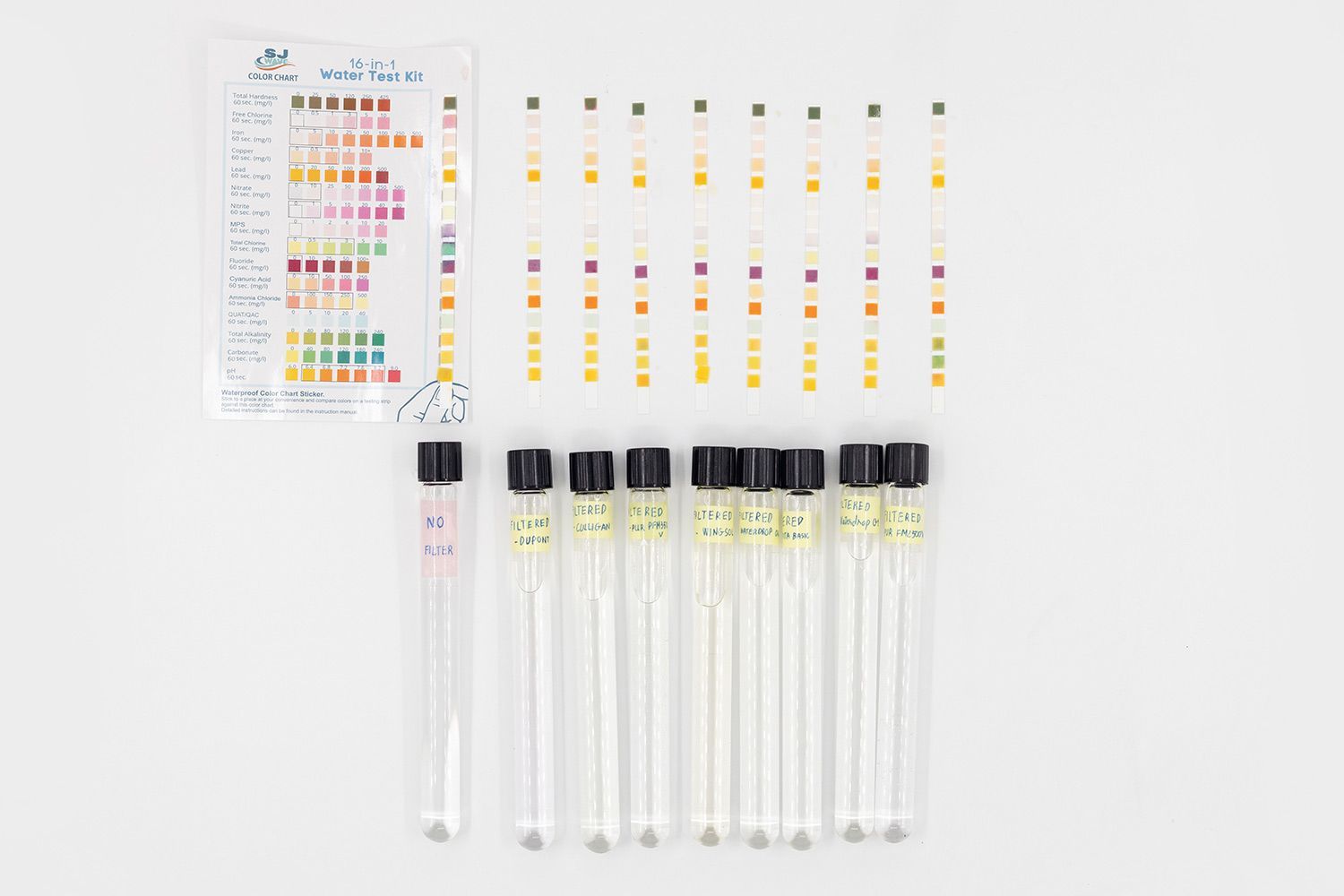
Testing Procedure
The faucet is first mounted onto the faucet of our testing rig.
As our tap water is not sufficiently chlorinated to show clear results, we decided to mix a testing solution on our own by impregnating 2.6 gallons (equivalent to 10 liters) of water with a small amount of Calcium Hypochlorite (Ca(OCl)2).
Ca(OCl)2 will dissolve and turn into Chlorine in water.
Using a small pump, we feed the water through the testing rig and the filter.
The filtered water is collected in a cup and tested to see how drastically the chlorine level has changed compared to the original chlorinated water using a testing kit.
Scoring
We’ll score the chlorine-filtration performance of each filter based on the coloring of the testing kit.
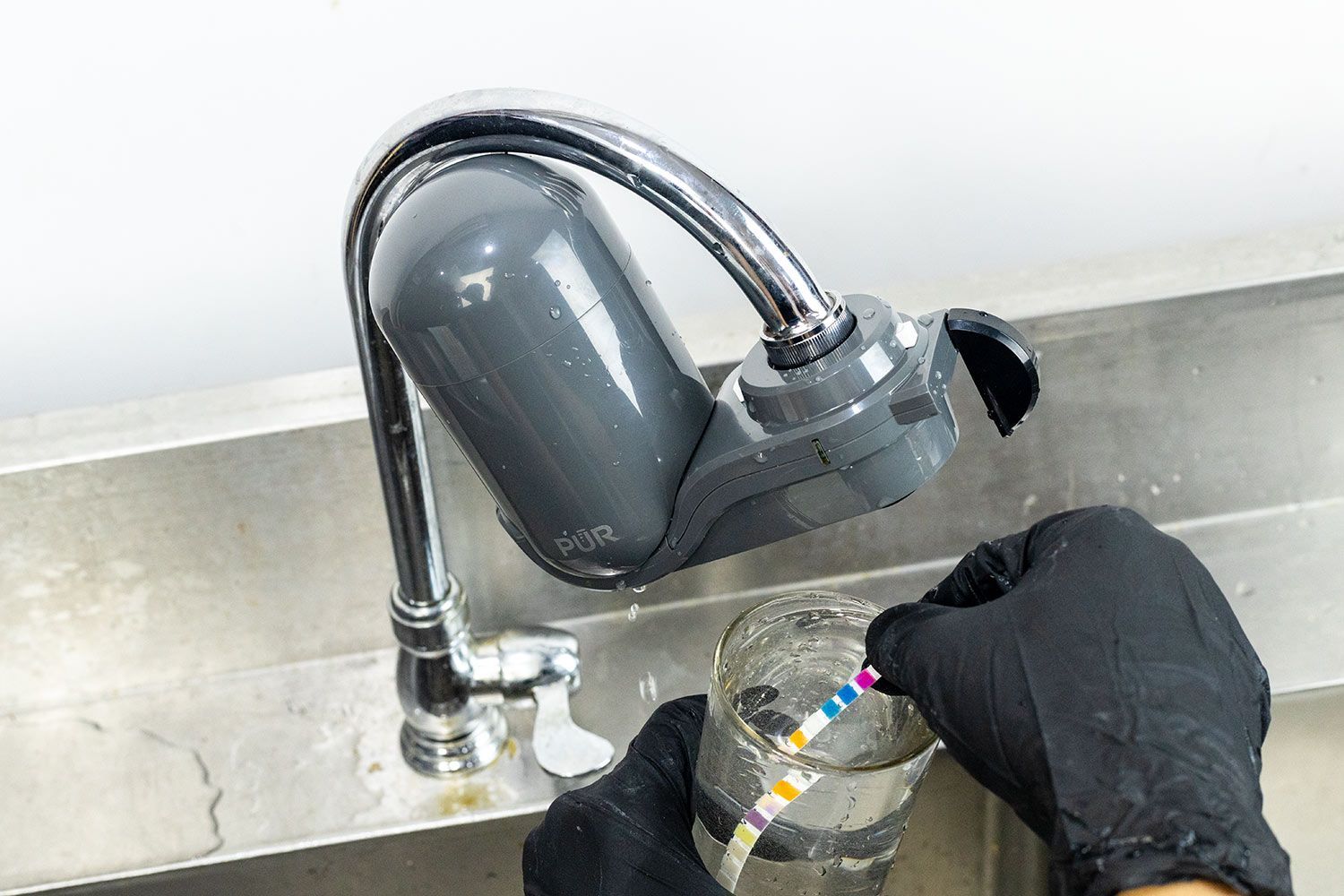
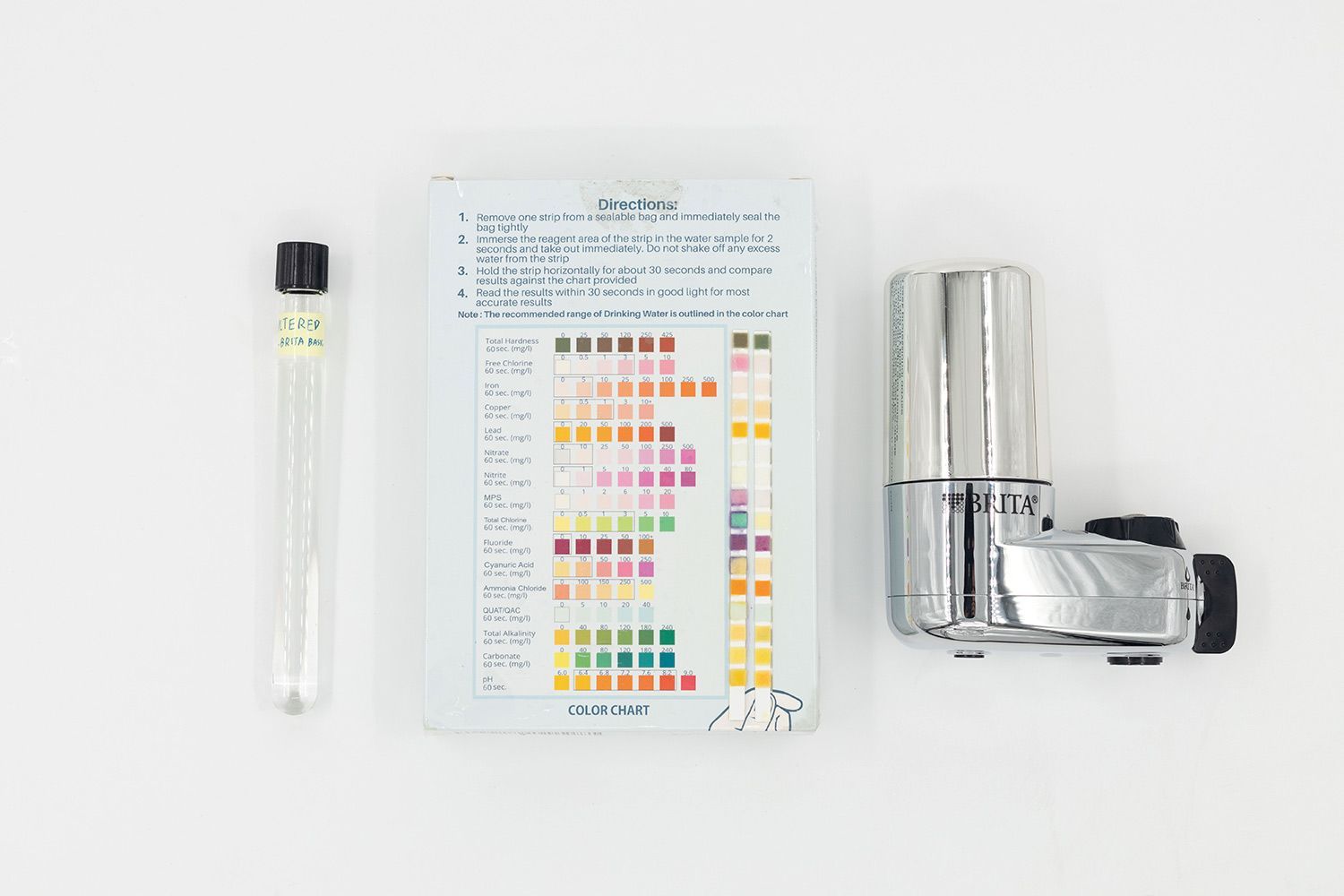
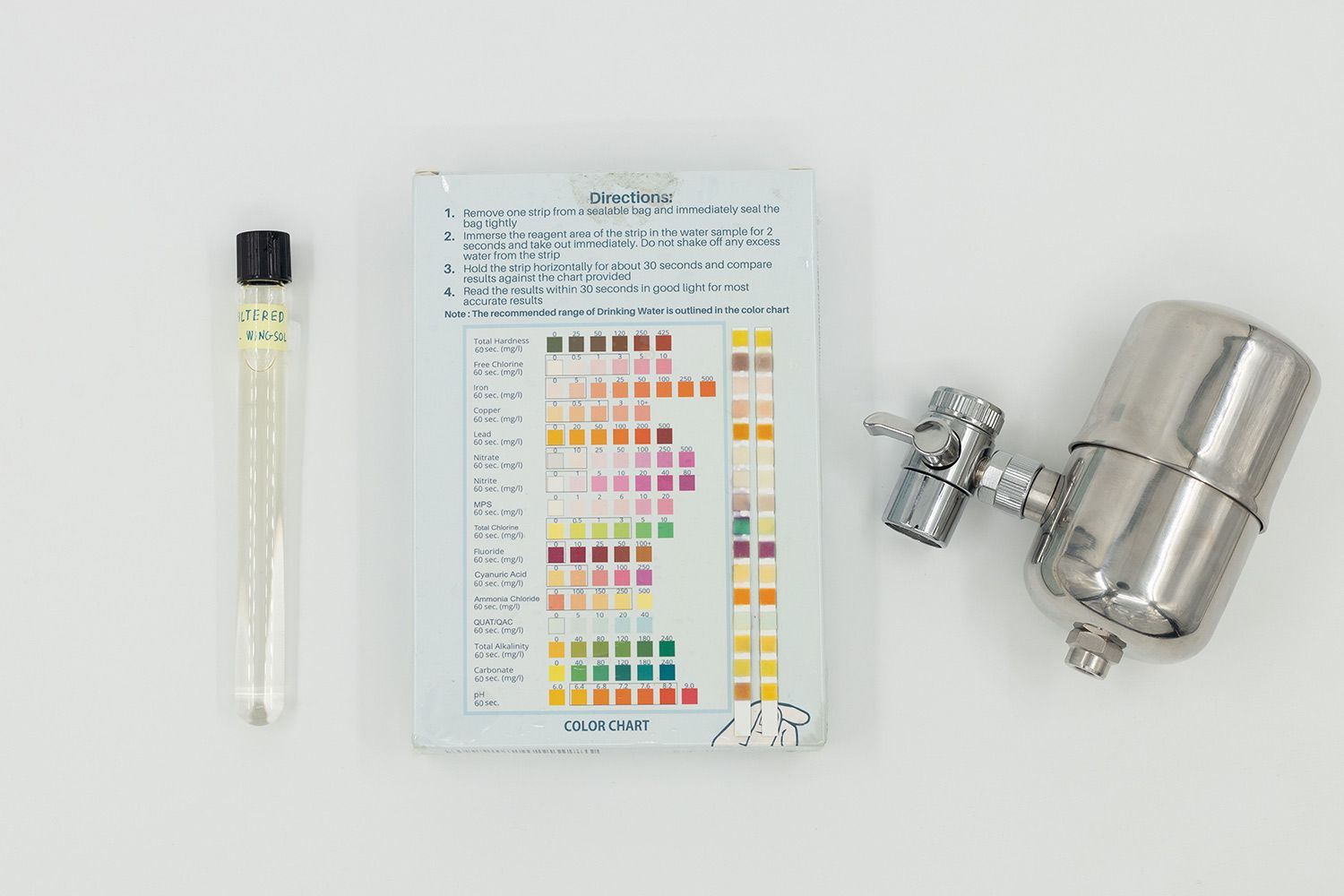
Flow Rate Test (20%)
The Premise
The flow rate of a faucet-mount filter determines how quickly it can purify and deliver clean water for you. Because the filtration block is made from dense materials that slow down water flow, the flow rate through the filter will be noticeably slower than you can expect from a bathroom or kitchen faucet without it.
In the US, the maximum flow rate of a bathroom or kitchen faucet is 2.2 gallons per minute or GPM. But depending on many factors (water supply in the area, your faucet’s design, etc.), your faucet’s actual flow rate can be anywhere between 1.0 and 2.2 GPM
Testing Procedure
This test aims to measure the difference between the typical flow rate of the faucet and the water flow rate when it goes through the filter. The closer these rates are to one another, the better.
We start by calculating the normal flow rate of our faucet sans filter.
After that, we mount the filter to the faucet and switch it on. The filtered water is deposited into a cup while a timer — set for 20 seconds — runs in the background.
After 20 seconds, the water collected is weighted on a scale.
Scoring
We first convert this amount into gallons as our scale measures in milliliters (ml). The result is multiplied by 3 to get an accurate reading on the GPM of the filter.
If the result is 1.5 GPM or higher, the filter will receive an “Excellent score from us (10 out of 10). For every 0.2 GPM below 1.5 GPM, one point will be deducted.
Any filter with a flow rate lower than 0.5 GPM will be graded as "Failed.”
Design
In the design assessment, our team inspects every component and detail of the filter to see how well it’s built. We pay special attention to the two main components of the filter: the filter piece and the housing. Also included in the assessment is the routing valve, which is a small component that allows users to alternate between filtered water and regular tap water.
The better the result in this assessment, the more durable and reliable the filter will be.
In total, the design assessment has three scored parts:
- Build Quality (40%)
- Filter Piece (50%)
- Routing Valve (10%)
Build Quality (40%)
The build quality represents the overall craftsmanship and durability of the entire faucet-mount filter. This includes the main body of the filter (the housing) and all integrated components like the attachment collar, the compartment or connector for the filter piece, and the routing valve.
Our reviewers specifically look at the aesthetic, robustness, the quality of the material, and the construction precision of the entire unit. The more well-build the filter, the longer it’ll last and the more reliable it is.
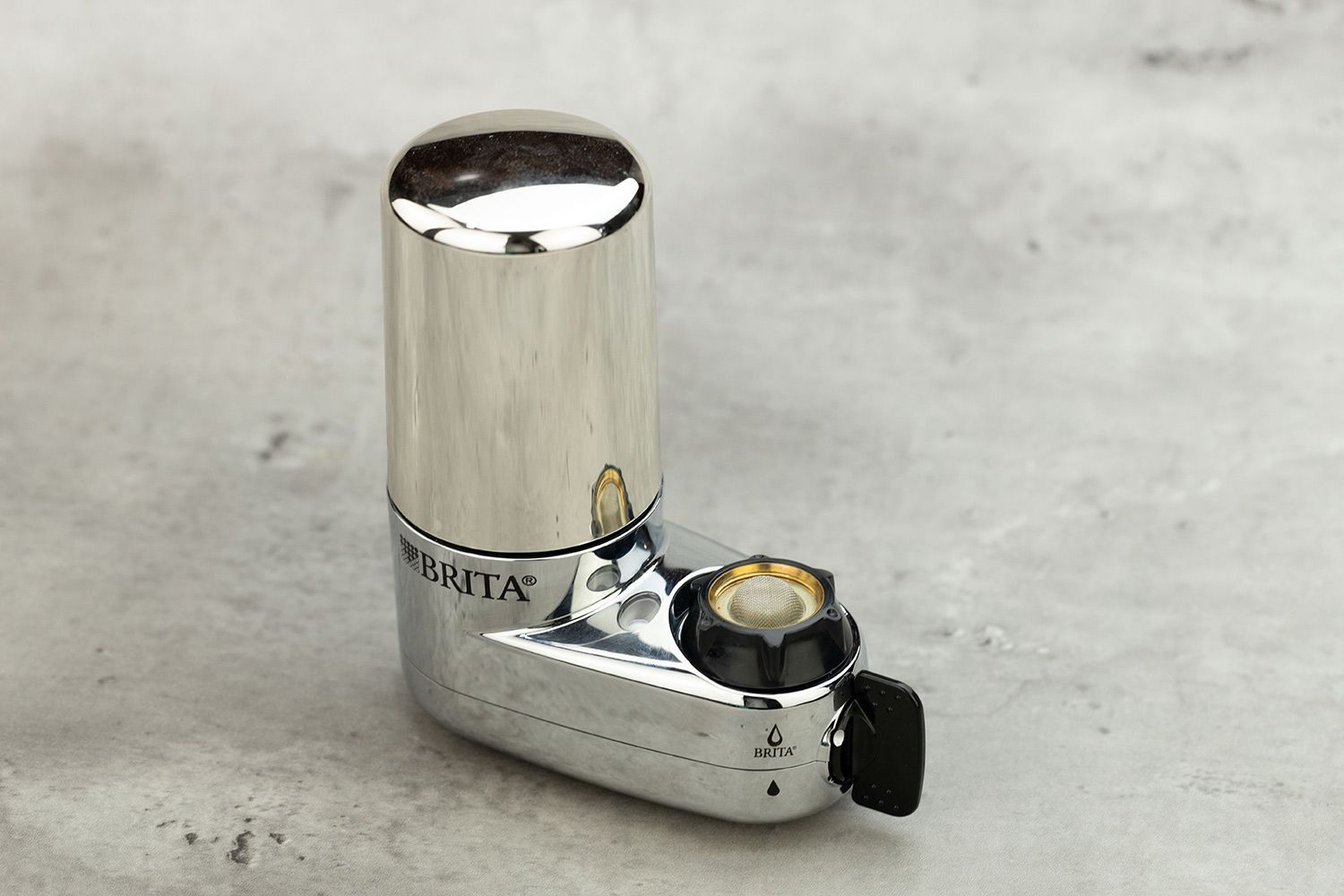
Filter Piece (50%)
Responsible for filtering harmful chemicals and contaminants out of the water, the filter piece is the most important part of any faucet-mount filter. As a result, it’s the component with the largest score weighting in the design assessment (50%).
Besides assessing how well the filter is constructed, we’ll also look into the filtration materials and longevity of the filter.
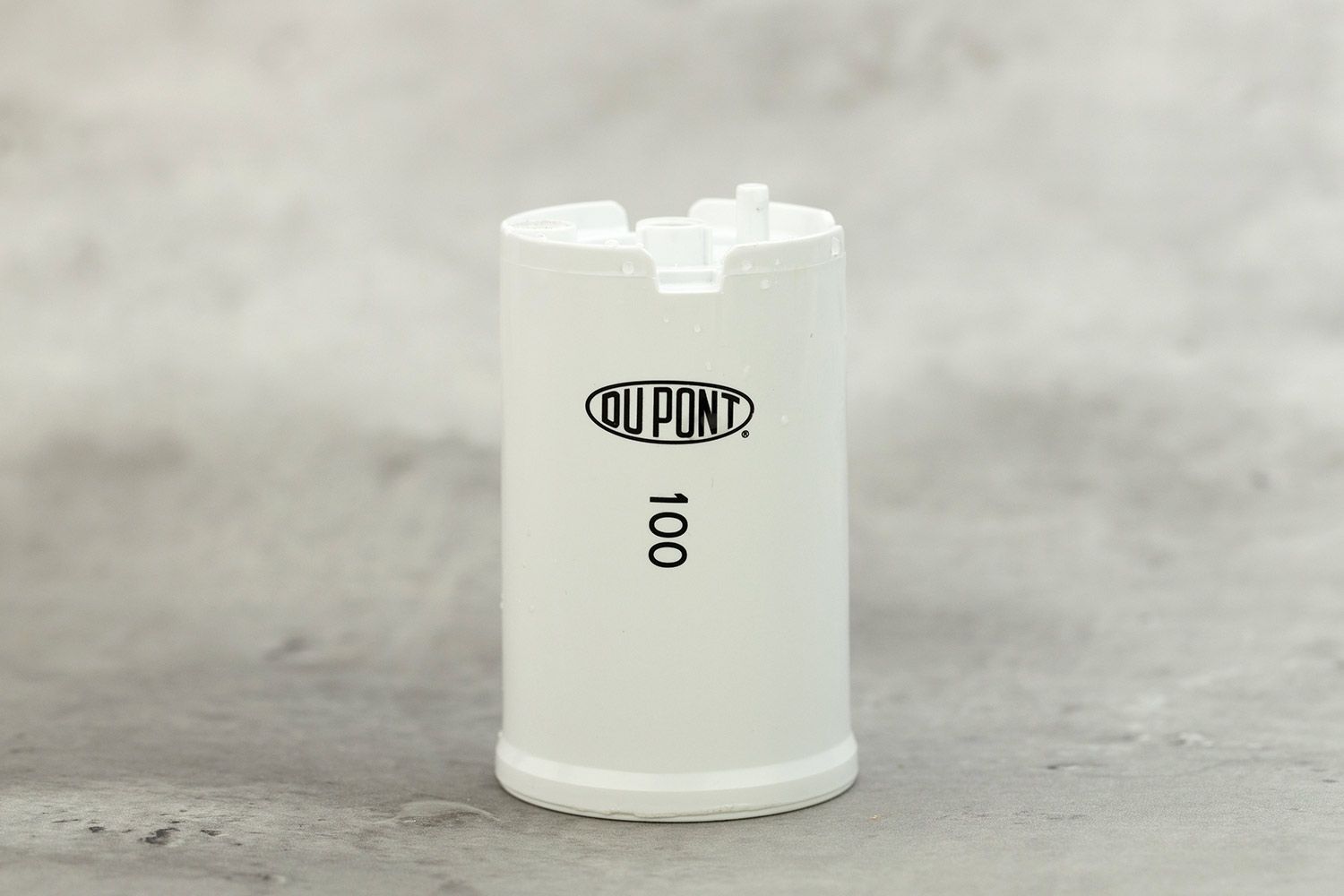
Routing Valve (10%)
The routing valve is a small yet crucial component of a faucet-mount water filter. Most filters have two modes: filtering and bypassing.
When in “filtering mode,” tap water will be routed through the filter block and purified. When you don't need filtered water, you can switch the filter to “bypass mode,” allowing tap water to flow without passing through the filter block.
You can switch back and forth between either mode by working the routing valve. This valve is operated manually using a switch located on the filter.
We look at two things in this section: how easy it is to use the valve and how well it’s constructed (by seeing whether it leaks when switching between modes.)

Usability
The ease of use assessment is all about the user experience. In this section, we look at three aspects in particular: the ease of installation (25%), ease of use (30%), leak (35%), and maintenance (10%).
Installation (25%)
As a whole, installing a faucet-mount water filter is quite easy. The shipping box should contain all the parts (adapters, rubber seals, plumbing tape) you need to install the filter properly. However, certain models can be quite a pain.
We’ll report our own installation experience in this part to give you a better idea of the process.
Ease of Use (30%)
For the usability section, we factor in all aspects of the user experience when using the filter. This includes how straightforward it is to open and close, whether there are any leakage issues when changing modes, and how secure the filter is held in place on the faucet.
Leak (35%)
Faucet-mount filters may leak either from their nozzles or seams on their housing. There are many potential reasons why, from improper installation to ill-fitting adapters or faulty construction. During this assessment, we’ll pay attention to how watertight the components on the filter are and score our observation accordingly.
Maintenance (10%)
Filter blocks have a finite lifespan - they need to be replaced after they have treated a certain amount of water.
Some models come with an indicator light that notifies you when the filter needs to be changed, whereas, for other models, you need to take note of this yourself.
The model will receive a bonus in this assessment if it has a filter change light. We’ll also note how easy it is to switch out the filter and buy replacement filters.